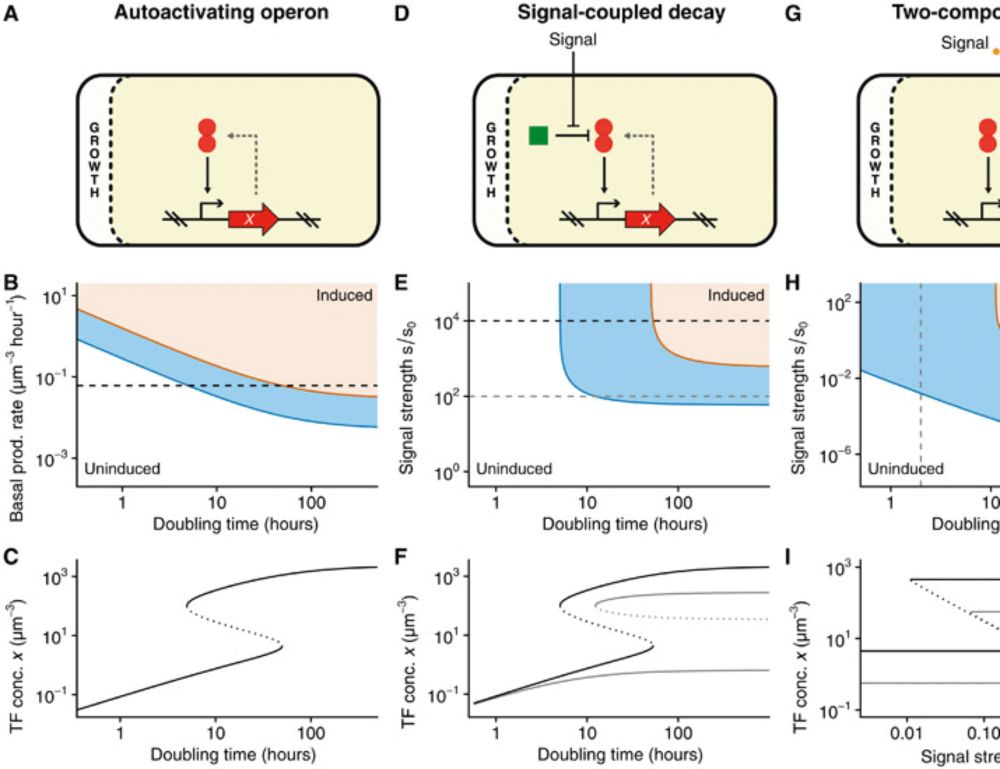
Daan de Groot
@dhdegroot.bsky.social
Postdoc at Biozentrum in Basel. How do single cells decide what to become? What to do? When? Where? In fact, how do humans?
Pinned
Daan de Groot
@dhdegroot.bsky.social
· May 9
Bonsai is out! Finally, we can visually explore high-dimensional data in a distortion-free way. Try it out! It works from scRNA-seq data (bonsai.unibas.ch/bonsai-scout...) up to football statistics (bonsai.unibas.ch/bonsai-scout...).
Ever wondered why low-dimensional embeddings like t-SNE
Reposted by Daan de Groot
Are you excited to pursue your own research interests and contribute to our group’s experimental research in the quantitative biology of microbes? We have an opening for a potentially permanent position as research associate.
Please repost and notify potential candidates!
Please repost and notify potential candidates!
Research Associate (100%)
Starting from 1 November 2025 or as per agreement
Group @erikvannimwegen.bsky.social
@biozentrum.unibas.ch
@unibas.ch
www.biozentrum.unibas.ch/open-positio...
#job #research #biology #microbiology #science #basel #recruiting #career
Starting from 1 November 2025 or as per agreement
Group @erikvannimwegen.bsky.social
@biozentrum.unibas.ch
@unibas.ch
www.biozentrum.unibas.ch/open-positio...
#job #research #biology #microbiology #science #basel #recruiting #career

September 18, 2025 at 9:26 AM
Are you excited to pursue your own research interests and contribute to our group’s experimental research in the quantitative biology of microbes? We have an opening for a potentially permanent position as research associate.
Please repost and notify potential candidates!
Please repost and notify potential candidates!
Reposted by Daan de Groot
Please! No more UMAPs/t-SNEs 👇👇👇
Here it is! Bonsai. Now there is really no more excuse for using t-SNE/UMAP. Bonsai not only makes cool pictures of your data. It actually rigorously preserves its structure. No tunable parameters. Incredible work by @dhdegroot.bsky.social.
I'm so excited about this!
www.biorxiv.org/content/10.1...
I'm so excited about this!
www.biorxiv.org/content/10.1...

Bonsai: Tree representations for distortion-free visualization and exploratory analysis of single-cell omics data
Single-cell omics methods promise to revolutionize our understanding of gene regulatory processes during cell differentiation, but analysis of such data continues to pose a major challenge. Apart from...
www.biorxiv.org
May 11, 2025 at 8:36 PM
Please! No more UMAPs/t-SNEs 👇👇👇
Oh yes, and check out my debut as a failed YouTuber. I'm really much more excited about this than I sound in the video, because look how nice our Bonsai-scout app actually works to explore the data!
Bonsai-scout allows different layouts, zooming in
and out on areas, visualizing gene expression or annotations on the tree, finding 'clusters' (well-separated clades), and finding marker genes that distinguish any pair of clades. Check out our tutorial videos!
www.youtube.com/watch?v=TE7T...
and out on areas, visualizing gene expression or annotations on the tree, finding 'clusters' (well-separated clades), and finding marker genes that distinguish any pair of clades. Check out our tutorial videos!
www.youtube.com/watch?v=TE7T...

Bonsai-scout: Highlights
YouTube video by ISMARA: inferring gene regulatory interactions
www.youtube.com
May 9, 2025 at 12:00 PM
Oh yes, and check out my debut as a failed YouTuber. I'm really much more excited about this than I sound in the video, because look how nice our Bonsai-scout app actually works to explore the data!
Bonsai is out! Finally, we can visually explore high-dimensional data in a distortion-free way. Try it out! It works from scRNA-seq data (bonsai.unibas.ch/bonsai-scout...) up to football statistics (bonsai.unibas.ch/bonsai-scout...).
Ever wondered why low-dimensional embeddings like t-SNE
May 9, 2025 at 11:55 AM
Bonsai is out! Finally, we can visually explore high-dimensional data in a distortion-free way. Try it out! It works from scRNA-seq data (bonsai.unibas.ch/bonsai-scout...) up to football statistics (bonsai.unibas.ch/bonsai-scout...).
Ever wondered why low-dimensional embeddings like t-SNE
New publication! We identify growth coupled sensitivity: a deceivingly simple mechanism that makes E. coli switch to the best sugar. We combined neat theory (due to @erikvannimwegen.bsky.social, and to which I contributed) with clean experiments (due to @thomasjulou.bsky.social and Theo Gervais).
The most profound insights are often also the most simple:
growth-rate, by setting the dilution rate of intra-cellular molecules, controls the sensitivity of gene regulatory circuits. In retrospect it seems crazy that this effect seems to have been overlooked so far.
www.science.org/doi/10.1126/...
growth-rate, by setting the dilution rate of intra-cellular molecules, controls the sensitivity of gene regulatory circuits. In retrospect it seems crazy that this effect seems to have been overlooked so far.
www.science.org/doi/10.1126/...

Growth rate controls the sensitivity of gene regulatory circuits
Through the simple effect of dilution rate, regulatory circuits systematically change their sensitivity with growth rate.
www.science.org
May 4, 2025 at 7:48 AM
New publication! We identify growth coupled sensitivity: a deceivingly simple mechanism that makes E. coli switch to the best sugar. We combined neat theory (due to @erikvannimwegen.bsky.social, and to which I contributed) with clean experiments (due to @thomasjulou.bsky.social and Theo Gervais).
Reposted by Daan de Groot
Um die grossen Herausforderungen unserer Zeit (KI, Klimawandel, Pandemien, etc) richtig beurteilen zu können, brauchen wir fundierten Wissenschaftsjournalismus.
Es ist ein Fehler, dass #SRF ausgerechnet hier spart.
bajour.ch/a/die-srf-sp...
Es ist ein Fehler, dass #SRF ausgerechnet hier spart.
bajour.ch/a/die-srf-sp...

Sparmassnahmen treffen SRF Standort in Basel
SRF streicht Formate in den Bereichen Kultur und Wissenschaft. Das wird auch der Standort in Basel zu spüren bekommen. Bei Politiker*innen und in der Bajour-Community lösen die jüngst angekündigten Ma...
bajour.ch
February 9, 2025 at 8:54 PM
Um die grossen Herausforderungen unserer Zeit (KI, Klimawandel, Pandemien, etc) richtig beurteilen zu können, brauchen wir fundierten Wissenschaftsjournalismus.
Es ist ein Fehler, dass #SRF ausgerechnet hier spart.
bajour.ch/a/die-srf-sp...
Es ist ein Fehler, dass #SRF ausgerechnet hier spart.
bajour.ch/a/die-srf-sp...
Reposted by Daan de Groot
Thrilled to announce that our work (w. with fantastic @neher.io and Liam Shaw) has been published on Molecular Biology and Evolution! 🎉
academic.oup.com/mbe/advance-...
Are you curious about how fast the genome of E.coli evolves structurally (gains, rearrangements...) ? 🧬
A summary thread [1/N]🧵
academic.oup.com/mbe/advance-...
Are you curious about how fast the genome of E.coli evolves structurally (gains, rearrangements...) ? 🧬
A summary thread [1/N]🧵

Quantifying the evolutionary dynamics of structure and content in closely-related E. coli genomes
Abstract. Bacterial genomes primarily diversify via gain, loss, and rearrangement of genetic material in their flexible accessory genome. Yet the dynamics
academic.oup.com
January 6, 2025 at 5:12 PM
Thrilled to announce that our work (w. with fantastic @neher.io and Liam Shaw) has been published on Molecular Biology and Evolution! 🎉
academic.oup.com/mbe/advance-...
Are you curious about how fast the genome of E.coli evolves structurally (gains, rearrangements...) ? 🧬
A summary thread [1/N]🧵
academic.oup.com/mbe/advance-...
Are you curious about how fast the genome of E.coli evolves structurally (gains, rearrangements...) ? 🧬
A summary thread [1/N]🧵
Reposted by Daan de Groot
What do bacterial cells do when they run out of nutrients? Although most bacterial studies focus on cells in exponentially growing states, in the wild bacteria likely spend most of their time slowly starving to death. 1/n
www.biorxiv.org/content/10.1...
www.biorxiv.org/content/10.1...

E. coli prepares for starvation by dramatically remodeling its proteome in the first hours after loss of nutrients
It is widely believed that due to nutrient limitations in natural environments, bacteria spend most of their life in non-growing states. However, very little is known about how bacteria change their p...
www.biorxiv.org
January 15, 2025 at 11:12 AM
What do bacterial cells do when they run out of nutrients? Although most bacterial studies focus on cells in exponentially growing states, in the wild bacteria likely spend most of their time slowly starving to death. 1/n
www.biorxiv.org/content/10.1...
www.biorxiv.org/content/10.1...

